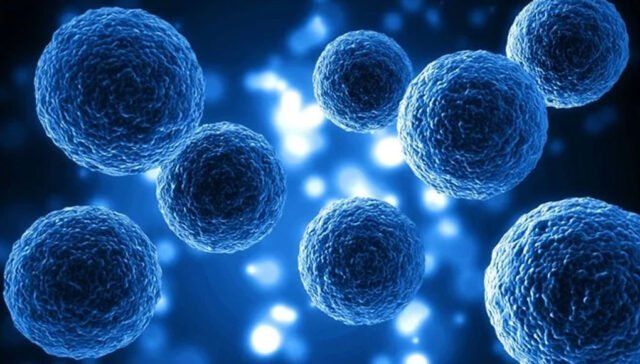MCQs on “Introduction to Cell Biology: Fundamental Concepts for Exams”
1. What is the basic unit of life?
A) Atom
B) Molecule
C) Cell
D) Organism
Answer: C) Cell
2. Which of the following is a prokaryotic cell?
A) Plant cell
B) Animal cell
C) Bacterial cell
D) Fungal cell
Answer: C) Bacterial cell
3. Which organelle is responsible for energy production in the cell?
A) Nucleus
B) Ribosome
C) Mitochondrion
D) Golgi apparatus
Answer: C) Mitochondrion
4. Which of these structures is only found in plant cells?
A) Nucleus
B) Chloroplast
C) Mitochondrion
D) Ribosome
Answer: B) Chloroplast
5. What is the function of the cell membrane?
A) Control cell division
B) Store genetic material
C) Regulate the movement of substances in and out of the cell
D) Produce energy
Answer: C) Regulate the movement of substances in and out of the cell
6. Which structure in the cell is responsible for protein synthesis?
A) Endoplasmic reticulum
B) Ribosomes
C) Golgi apparatus
D) Mitochondria
Answer: B) Ribosomes
7. What is the function of lysosomes?
A) Protein synthesis
B) Digestion of macromolecules
C) Energy production
D) Photosynthesis
Answer: B) Digestion of macromolecules
8. Which organelle contains the cell’s genetic material?
A) Ribosome
B) Nucleus
C) Mitochondrion
D) Lysosome
Answer: B) Nucleus
9. Which of the following is not part of the cytoskeleton?
A) Microtubules
B) Actin filaments
C) Endoplasmic reticulum
D) Intermediate filaments
Answer: C) Endoplasmic reticulum
10. What is the primary component of the cell wall in plants?
A) Cellulose
B) Chitin
C) Protein
D) Lipids
Answer: A) Cellulose
11. Which organelle is involved in the synthesis of lipids?
A) Rough endoplasmic reticulum
B) Smooth endoplasmic reticulum
C) Golgi apparatus
D) Lysosome
Answer: B) Smooth endoplasmic reticulum
12. What is the function of the Golgi apparatus?
A) Protein synthesis
B) Transport of proteins and lipids
C) Storage of genetic material
D) Cellular respiration
Answer: B) Transport of proteins and lipids
13. Which of the following cells lack a nucleus?
A) Plant cells
B) Animal cells
C) Bacterial cells
D) Fungal cells
Answer: C) Bacterial cells
14. Which process involves the movement of substances from a higher to a lower concentration?
A) Active transport
B) Diffusion
C) Phagocytosis
D) Endocytosis
Answer: B) Diffusion
15. Which structure is responsible for maintaining the shape of the cell?
A) Cytoplasm
B) Nucleus
C) Plasma membrane
D) Cytoskeleton
Answer: D) Cytoskeleton
16. Which of the following is not a characteristic of prokaryotic cells?
A) No nucleus
B) Presence of ribosomes
C) Membrane-bound organelles
D) DNA is circular
Answer: C) Membrane-bound organelles
17. What is the role of the nucleolus?
A) Protein synthesis
B) RNA synthesis and ribosome production
C) DNA replication
D) Energy production
Answer: B) RNA synthesis and ribosome production
18. Which of these is a characteristic of eukaryotic cells?
A) Lack of membrane-bound organelles
B) Circular DNA
C) Membrane-bound nucleus
D) Unicellular
Answer: C) Membrane-bound nucleus
19. What type of cell division results in two identical daughter cells?
A) Meiosis
B) Mitosis
C) Binary fission
D) Both B and C
Answer: B) Mitosis
20. In which part of the cell does the citric acid cycle (Krebs cycle) occur?
A) Nucleus
B) Mitochondrion
C) Cytoplasm
D) Ribosomes
Answer: B) Mitochondrion
21. Which of the following is responsible for the detoxification of harmful substances?
A) Mitochondrion
B) Peroxisomes
C) Nucleus
D) Ribosomes
Answer: B) Peroxisomes
22. Which structure in plant cells is responsible for capturing sunlight for photosynthesis?
A) Mitochondria
B) Chloroplasts
C) Ribosomes
D) Golgi apparatus
Answer: B) Chloroplasts
23. What is the name of the semi-permeable membrane surrounding the cell?
A) Cytoskeleton
B) Nucleus
C) Plasma membrane
D) Cell wall
Answer: C) Plasma membrane
24. Which of the following is responsible for synthesizing proteins in the cell?
A) Golgi apparatus
B) Ribosomes
C) Lysosomes
D) Endoplasmic reticulum
Answer: B) Ribosomes
25. Which of these is an example of passive transport?
A) Endocytosis
B) Diffusion
C) Active transport
D) Phagocytosis
Answer: B) Diffusion
26. In which phase of mitosis do chromosomes align at the cell’s equator?
A) Prophase
B) Metaphase
C) Anaphase
D) Telophase
Answer: B) Metaphase
27. What is the function of centrioles during cell division?
A) Synthesizing proteins
B) Separating chromosomes
C) Synthesizing DNA
D) Forming the nuclear envelope
Answer: B) Separating chromosomes
28. Which of the following organelles is involved in the transport of materials within the cell?
A) Golgi apparatus
B) Ribosomes
C) Endoplasmic reticulum
D) Lysosomes
Answer: C) Endoplasmic reticulum
29. What type of molecules are mainly transported by facilitated diffusion?
A) Water molecules
B) Ions and small molecules
C) Large proteins
D) Lipid-soluble molecules
Answer: B) Ions and small molecules
30. Which of these is a function of the smooth endoplasmic reticulum?
A) Protein synthesis
B) Lipid synthesis
C) Detoxification
D) Both B and C
Answer: D) Both B and C
These questions and answers cover the fundamental concepts of cell biology that are crucial for exams related to this subject.












